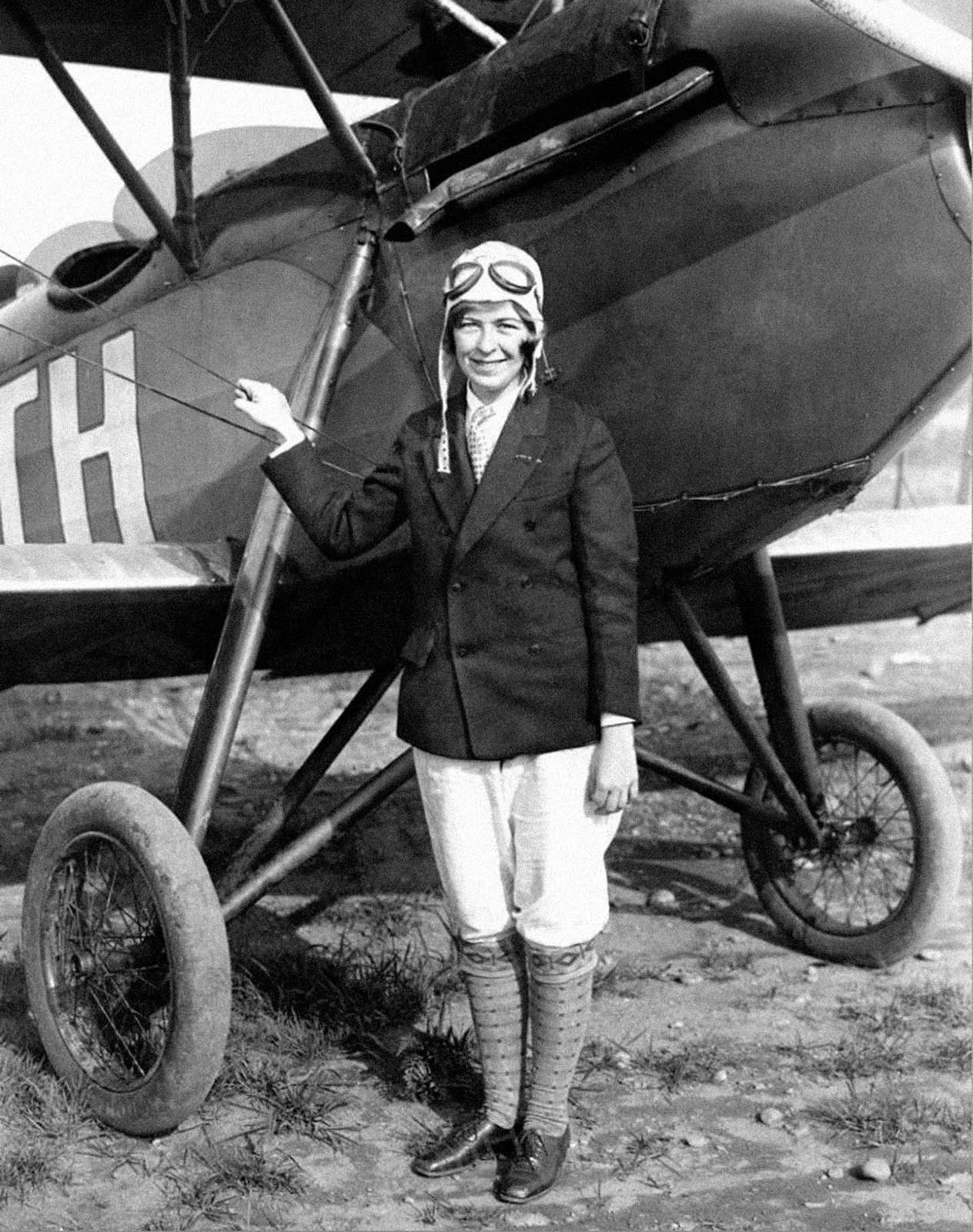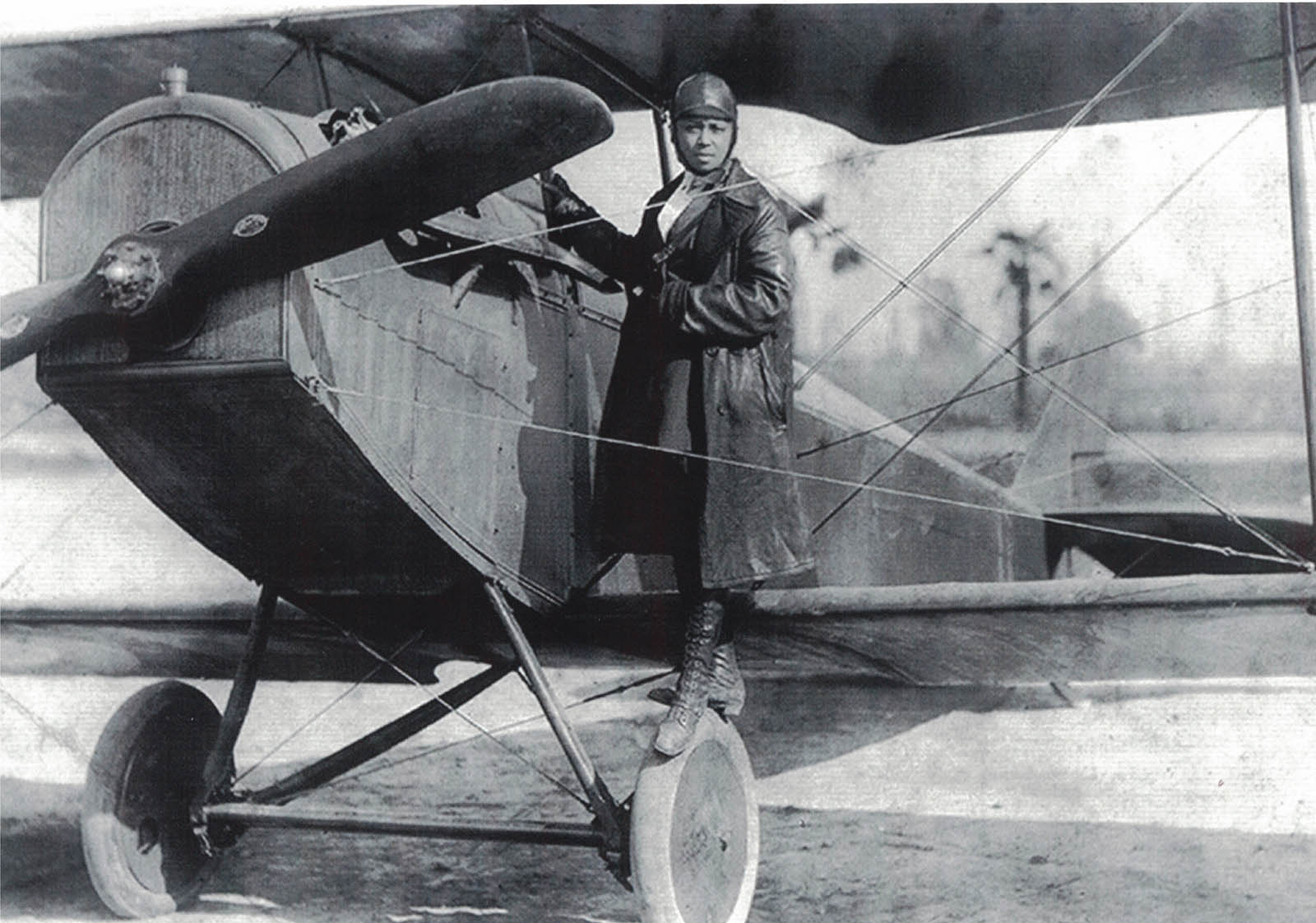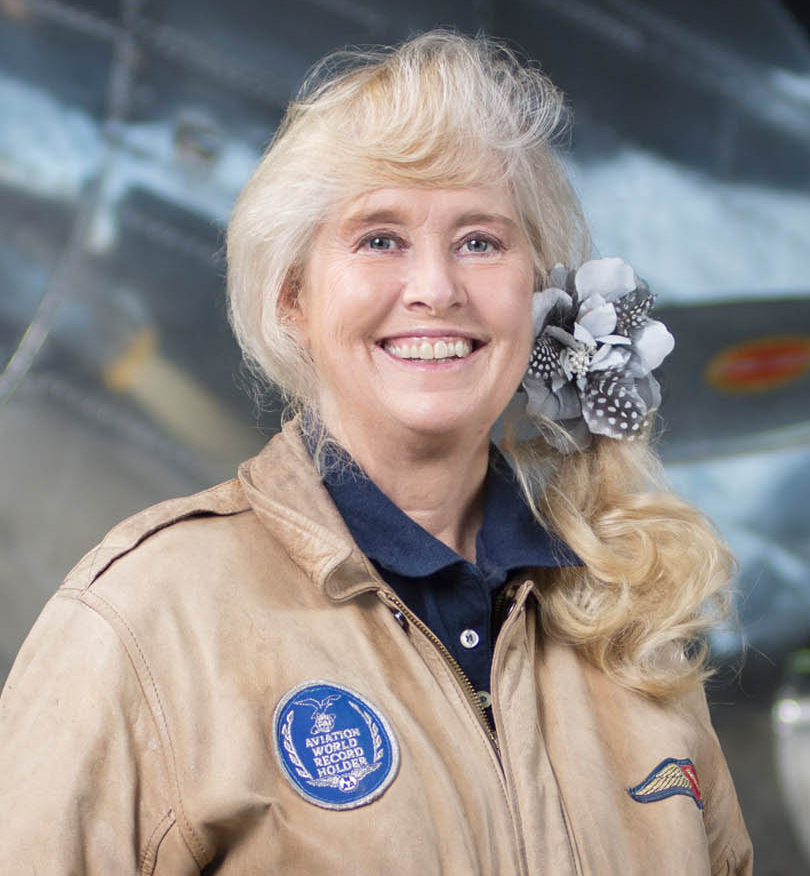Above: Georgia Ann Thompson, aka Tiny Broadwick, made history as the first person to make a freefall parachute jump.
Tiny Broadwick, America’s First Lady of Skydiving, leaped from balloons and airplanes to large, roaring crowds below. She was a celebrity on the barnstorming circuit who demonstrated to the government the effectiveness of parachutes as a method of escape for pilots. The diminutive “Doll Girl,” who was the first woman to jump from an airplane and the first person to freefall from an aircraft, is firmly cemented as a legend in the worlds of both skydiving and general aviation. But as we celebrate 75 years of the U.S. Parachute Association—the organization’s Diamond Jubilee—let’s also tip our helmets to some of history’s lesser-known female parachutists.
The Perils of Pauline
Beginning in 1914, silent films were drawing crowds all over the world. A popular weekly serial was “The Perils of Pauline.” The plot was always the same: damsel in distress, damsel escapes death by being amazingly resourceful. Enter teenager Phoebe Jane Fairgrave, who had danced the Charleston on an airplane wing and would later hang below airplanes of her own Phoebe Fairgrave Flying Circus. Quickly noticed by Fox Moving Pictures, she was hired as a stunt parachutist for Pauline, ready to escape yet another week of peril.
The Glenn Messer Flying Circus also hired Fairgrave to perform. During the 1920s, she developed her signature double-parachute jump. The feat involved jumping from a plane, deploying her canopy, cutting away and then, after freefalling, deploying a second canopy. In 1922, she set a record for the highest parachute jump for a woman: 15,200 feet.
The press called Fairgrave “second only to Amelia Earhart among America’s women pilots.” She believed she could, so she did! She was the first woman to earn an aircraft mechanic license, first female to get an air transport license, first female appointed to a federal government aviation position and first woman to fly a light plane across the Rocky Mountains.
Ethel Dare
During the early years of flying circus performances, several women who parachuted (and even changed planes in mid-air to the delight of enthralled audiences) assumed the name “Ethel Dare.” The first Ethel Dare was Ethel Gilmore Johnson, who in 1917 responded to a newspaper ad for stunt jumpers. She made more than 500 balloon jumps at state fairs nationwide. The newspapers called her “queen of the air.” One reporter wrote that she made “two of the most perfect balloon descensions ever known at Nashville.”
 In 1929, teenager Elinor Smith piloted a Bellanca Pacemaker for the Irvin Parachute Company on a 6,000-mile parachuting demonstration tour. In 1942, at the Cleveland Air Races, she safely piloted the plane for the first seven-man parachute drop.
In 1929, teenager Elinor Smith piloted a Bellanca Pacemaker for the Irvin Parachute Company on a 6,000-mile parachuting demonstration tour. In 1942, at the Cleveland Air Races, she safely piloted the plane for the first seven-man parachute drop. In 1924, at age 28, Ethel Gilmore Johnson died performing airplane wing-walking tricks. She was not wearing a parachute. Other women who filled in as Ethel Dare when the “real” Ethel could not perform were Margie Potteiger Hobbs and 17-year-old Deborah DeCostello. DeCostello was later killed parachuting in high winds that carried her into Lake Michigan.
The Caterpillar Club
In 1922, the Switlik Parachute Company of Trenton, New Jersey, and several other parachute manufacturers founded the Caterpillar Club. The “caterpillar” refers to the silk threads used in their parachutes. Membership was accorded to those who successfully used a parachute to bail out of a disabled aircraft. According to their early records, on July 4, 1925, Irene McFarland, a stunt jumper, became the first female Caterpillar Club member. McFarland was testing a parachute she designed during a 3,500-foot jump. Government regulators made her wear a reserve parachute, which she needed to use after a malfunction. She was accepted as a Caterpillar Club member because she did not intend to use the parachute that saved her life.
However, many aviation historians feel that Faye Gillis Wells, charter member of the Ninety-Nines International Organization of Women Pilots, should be considered the first woman to join the elite Caterpillar Club. In September 1929, the biplane Wells was piloting during an aerobatic flight broke apart, forcing her to parachute safely to the ground. Faye Gillis Wells also blazed trails in journalism, broadcasting and aviation.
Fearless Florence
Many historic barnstorming women began as parachute performers. North Dakota’s first licensed woman pilot, Florence Gunderson Klingensmith, agreed to perform in a flying circus in trade for flying lessons. Her first jump was on June 14, 1928, in Fargo. After some very brief instruction, Klingensmith bailed out of the plane about 1,700 feet above Hector Field. Her brother, George, witnessed the jump. “It was a wild ride. Florence pendulumed worse than any ‘chute jumper [I’d] ever seen.” Klingensmith was unconscious when she hit the ground. Undeterred, “Fearless Florence” successfully jumped again in both Bismarck and Brainerd.
On April 19, 1930, Klingensmith broke the women’s record for airplane inside loops, but it was considered unofficial because no National Aeronautics Association members were present. Well, if it was worth doing, it was worth overdoing, and on June 22, 1931, at Wold Chamberlain Field in Minneapolis in front of 50,000 spectators and aviation officials, Klingensmith flew for more than four hours and completed 1,078 inside loops. Already a charter member of the Ninety-Nines, Klingensmith (now nicknamed “Tree Tops”) became the first winner of the coveted Amelia Earhart Trophy. Earhart personally presented her with the prize, a new Essex Terraplane automobile.

Bessie Coleman was a groundbreaking parachutist and the world’s first licensed African American pilot.
Brave Bessie
Another legendary woman to use parachuting skills in her barnstorming performances was Bessie Coleman. In 1921, Coleman became the world’s first licensed African American pilot. She was refused flight training in the United States and left Chicago for France. Returning to America to much fanfare, Coleman toured the country barnstorming as “Brave Bessie,” raising money for her dream of an African American flying school. Because she ruled the sky, she was also called “Queen Bess.”
On April 20, 1926, when she was at 2,000 feet scouting the airfield on which she would perform her act the next day, the controls of her Curtiss JN-4 jammed. Coleman was thrown out, but unfortunately was not wearing her parachute. She died instantly, along with her pilot and mechanic, William Willis. It was later discovered that a wrench used to service the engine jammed the controls. Coleman was 34 years old. She was later recognized with her induction into the National Aviation Hall of Fame and the Women in Aviation International Pioneer Hall of Fame.
The equipment has changed, as have regulations, but the same sense of wonder and joy shared by these trailblazers is experienced today. One of the more modern women quoted in the new book “Inspiring Words for Sky and Space Women” is British aviator Polly Vacher. She described her first experience of skydiving this way: “Before I had more time to think, we launched into space. After the initial unwelcomed feeling of freefalling, I was overcome with the most exhilarating sense of peace and wonder. Once at terminal velocity of 120 mph, the sensation of falling disappeared, and I was flying like a bird. The clouds puffed around us and, amazingly, I could use my arms and legs to move about. I was filled with an unimaginable sense of awe. From that moment, there was no looking back.”
As many skydivers like to say: “To those who jump, no explanation is necessary. To those who don’t jump, no explanation is possible.” More inspiring stories about female pioneer parachutists are available at ladiesofskydiving.com/early-history.
 About the Author
About the Author
Dr. Penny Hamilton is the author of numerous books, including her newest, “Inspiring Words for Sky and Space Women.” She is a world-record-setting aviator and the recipient of the National Association of State Aviation Officials Journalism Award. Readers can learn more about her publications at pennyhamilton.com.